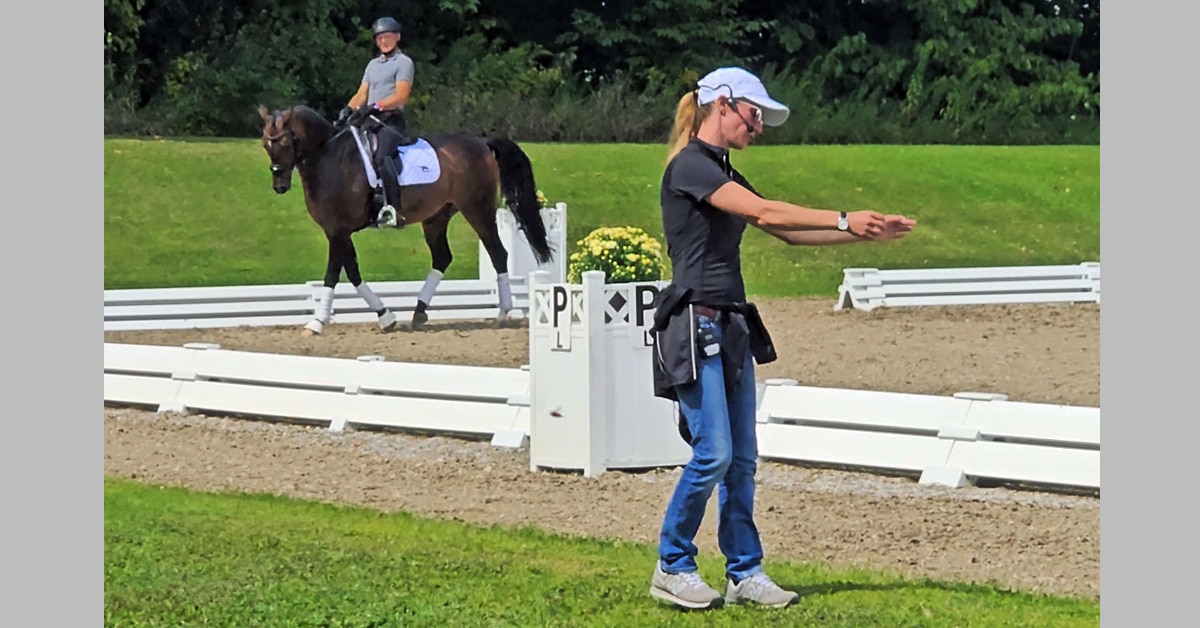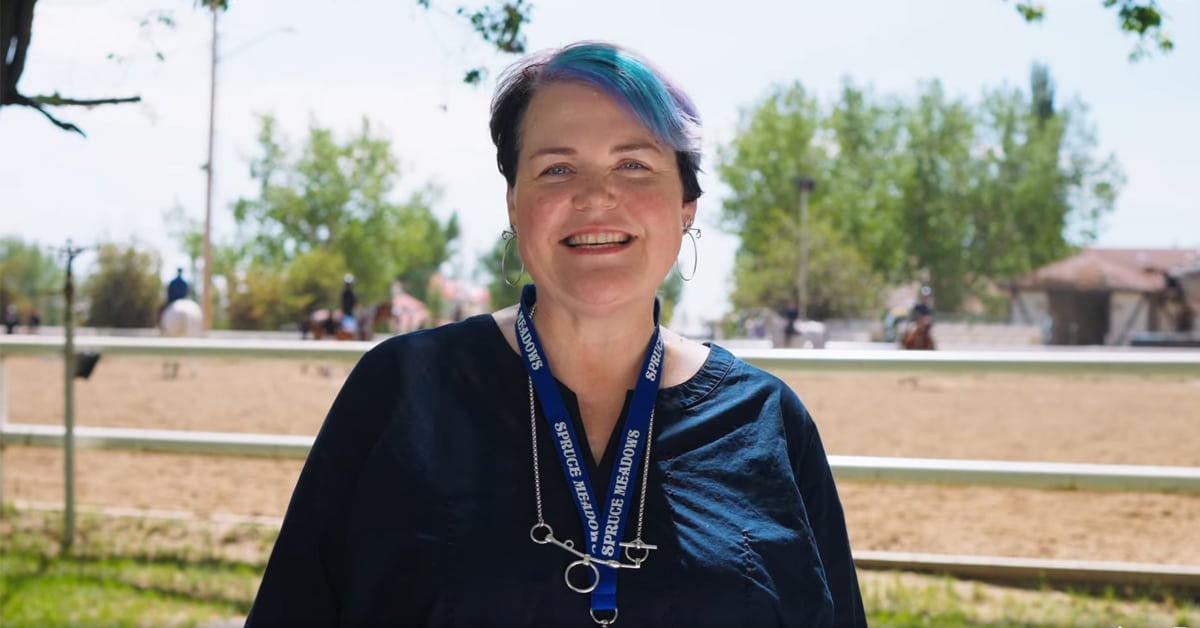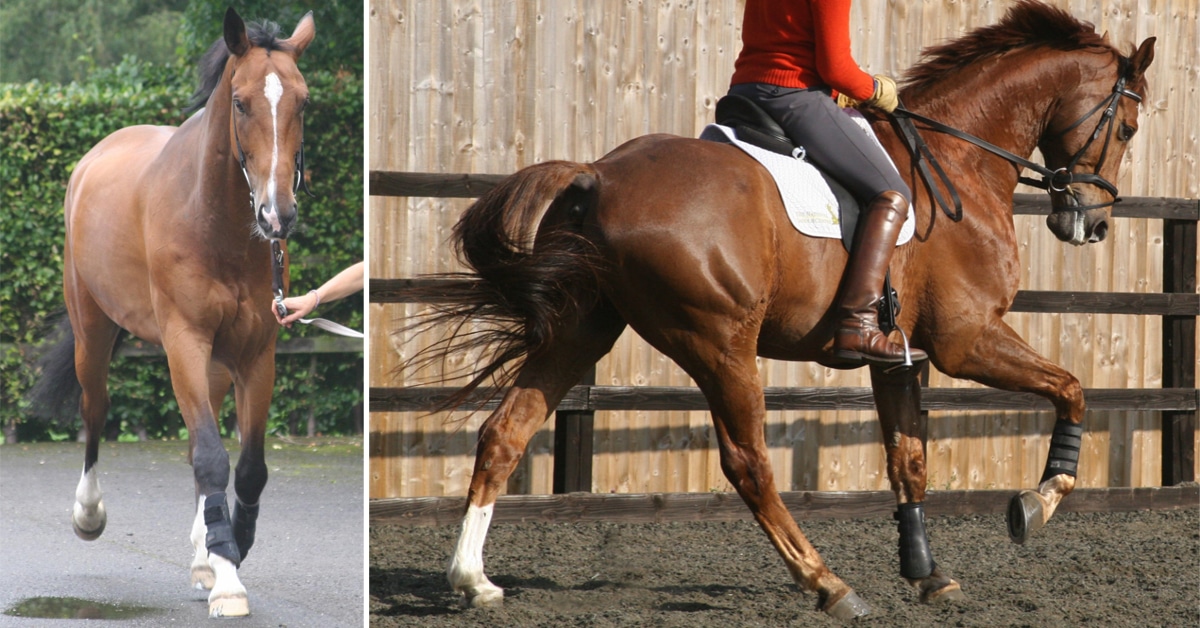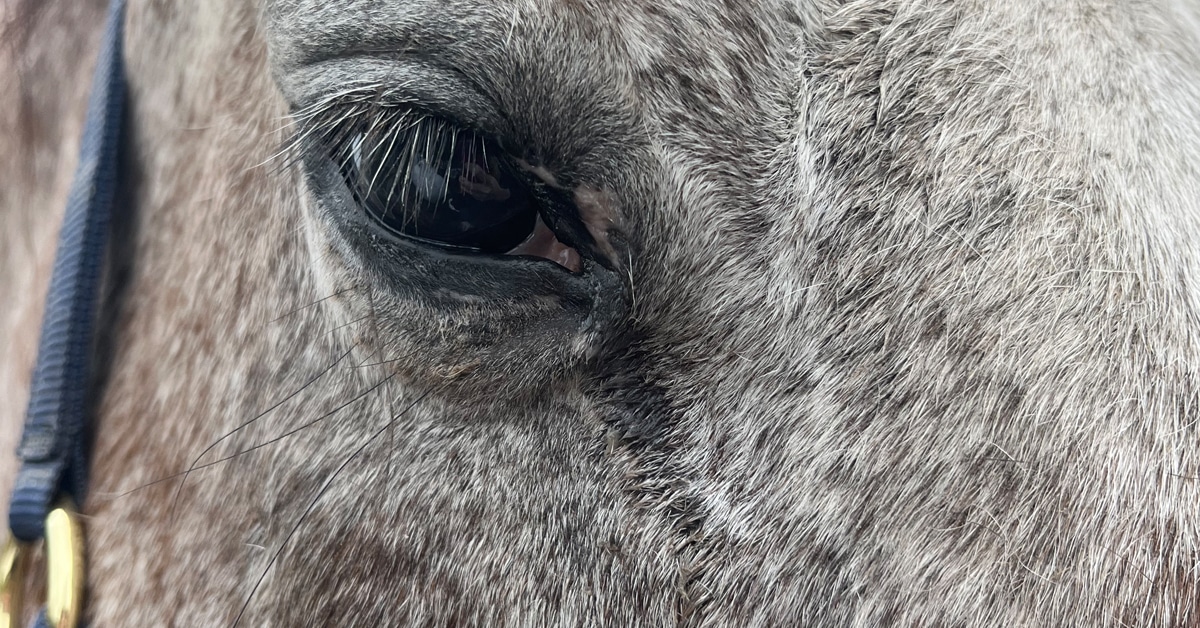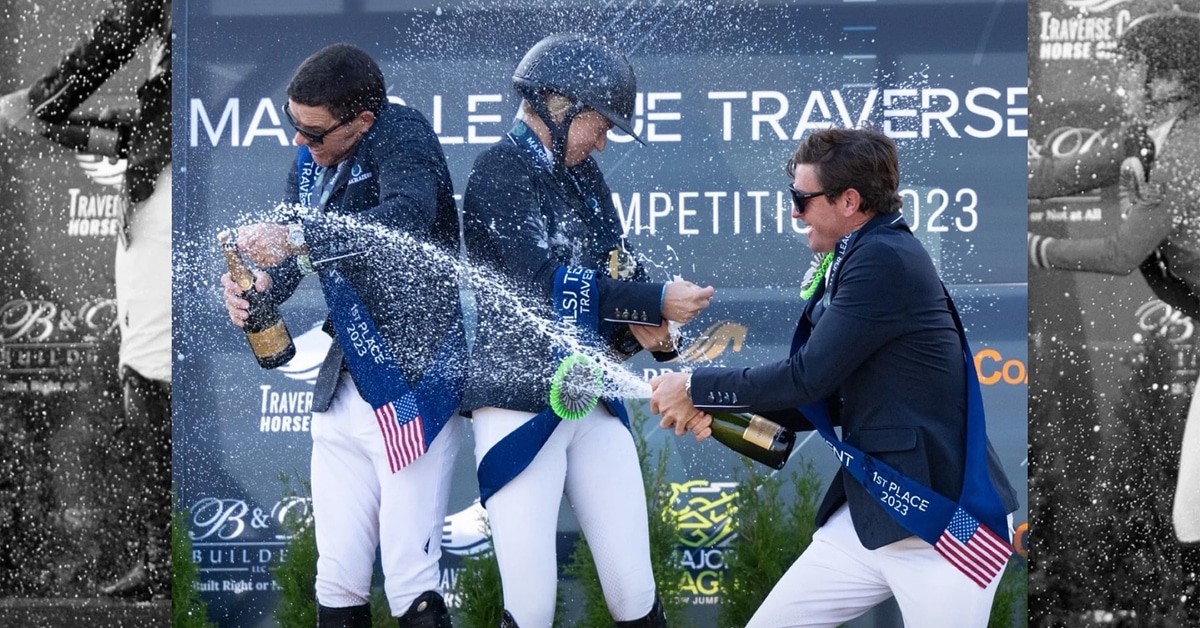Recently, bringing my horse in from the paddock, I saw that the one remaining horse outside was unhappy about being left alone. I asked our staff person if she would like me to bring her in. She replied, “Oh she’s just having one of her temper tantrums. She’s fine.”
This response triggered my psychologically-minded brain to question, “Do horses have temper tantrums like human toddlers or former American presidents?” Wasn’t this horse simply making a reasonable request to join her friends in the barn?
Indeed, horses’ communication efforts are often mislabeled as temper tantrums, a poor work ethic (as if horses should have a work ethic), or being a chestnut mare. A look at the research indicates that horses are eager and willing to communicate with us (they have clearly been trying their hearts out to understand what we have to say to them), but we haven’t always been the best listeners.
Language studies with primates have shown that gorillas, chimpanzees, and bonobos are adept at using American Sign Language and symbol lexicons to communicate with humans (e.g. Savage-Rumbaugh, 1994). This aptitude is not unexpected given our close genetic similarity with the great apes. Dogs, however, with whom we do not share the same genetic correspondence, have been receiving much attention of late for their unique sensitivity to human communication – in particular, referential communication. This occurs when one directs the attention of another (through pointing, showing, or touching) to something they want the other to attend to. It develops in children at 9 to 12 months of age and is considered a relatively rare and complex form of communication evolving in species living in rich social societies such as humans, and other primates.
Dogs seem to have a particular talent for correctly responding to human pointing gestures about the location of hidden food; interestingly, the great apes show little skill in this regard. Even puppies as young as 8 to 10 weeks of age with minimal exposure to humans are able to consistently make use of communication gestures from humans.
Cognitive ethologists Brian Hare and Michael Tomasello, the trail-blazers in dog cognition, suggest that through domestication dogs have fostered a unique interdependent bond with humans that allows them to understand and act upon a wide variety of human gestures, and generalize this knowledge to new situations without prior learning (Hare et al., 2002; Hare & Tomasello, 2005; Miklósi, 2008; Bray et al., 2020).
Although horses, too, form complex social societies and share a unique relationship with humans, they have not demonstrated similar stellar performances in referential gesture tasks. Horses do seem to follow human pointing gestures when the hand is close to the target treat bucket, by nuzzling and following the experimenter’s hand down to the reward, but it is not clear that they have a true grasp of human intention, but rather may be relying on the knowledge that human hands bring treats (Maros et al., 2010).

A schematic drawing of the Maros et al research, where an experimenter hid food under one of two bowls and after baiting, indicated the location of the food to the subjects by using one of four different cues.
Other studies have shown that horses do better on referential gesture tasks with practice, and that horses with prior horsemanship training such as the Parelli system (which relies on human gestures to direct a horse’s behaviour) significantly outperform horses trained with traditional methods (Dorey et al. 2014).
However, more recent research suggests that horses demonstrate surprising skill at utilizing these gestures themselves when they want something to which only their human has access. In a series of “unsolvable tasks” (where a horse is witness to a treat placed in an inaccessible lidded bucket) researchers have found not only that horses have a robust repertoire of referential gestures, but they also appear to understand the attentiveness and prior knowledge of their needed human accomplice.
Austrian researchers Rachele Malavasi and Ludwig Huber (2016) found that horses used numerous creative referential gestures to engage their handler’s attention toward a desired and inaccessible reward bucket, including nodding their heads, alternating their gaze between the handler and the treat bucket, and whipping their heads as if pointing to the reward bucket. However, horses only made these efforts if their human was looking at them. When the handler’s orientation was elsewhere, they first tried various strategies to gain their attention – some even walking back to the researcher and pushing her toward the bucket.
Japanese researchers Monamie Ringhofer and Shinya Yamamoto also found that horses were adept at using referential gestures (touching, pulling, and pushing their owners) to reach an inaccessible target treat (2017). Furthermore, horses worked much harder and longer to secure the attention of their owners when the owner had not been privy to the experimenter hiding the treat than they did when the owner had been present. Seemingly, the horses understood what their owners did and did not see, and were able to use this knowledge to flexibly respond in their signalling gestures.
Further evidence of horses’ effective communication is seen in a series of ingenious studies by Norwegian researchers Cecile Mejdell and her colleagues (Jørgensen et al., 2019; Mejdell et al., 2016; Mejdell et al., 2019) who trained horses to target a symbol that meant either “Blanket on please”, “Blanket off please”, or “I am fine as I am thank you.” All 23 horses learned the task within the 14-day time frame and expressed their preferences in a way that logically corresponded to the weather conditions they were experiencing.
Previous studies have demonstrated that horses are able to discriminate among various visual symbols and can learn, for example, that the triangle shape always brings the food reward, regardless of its position. They can also then “unlearn” that the triangle brings the food reward, and now it is the circle that does so, and they can remember this learning up to 10 years later with no training in between (Hangii & Ingersoll, 2009).
What is unique about Mejdell’s blanket studies is that horses not only learned to discriminate among three visual cues, but used that knowledge to make a free choice, not aided by the trainer or a potential food reward, but by their own internal motivation. Comparing the choices that horses made with the corresponding weather conditions indicates that their choices were not random, but associated with a specific outcome that would have an effect on their thermal comfort.
Mejdell also noted that once the horses understood that they could communicate their blanketing preferences to the trainers, some became very excited (whinnying and running up to the trainer) before their testing began. On a number of occasions when these horses were subsequently allowed make their choice, they quickly chose to have their blankets removed, whereupon researchers found that the horse was excessively sweaty underneath the blanket. Mejdell’s horses clearly knew what they wanted, understood the consequences of their choice, and were more than eager to tell the researchers so when given the opportunity.
Since horses are rather more expensive and cumbersome research subjects than dogs, equine research in this area is still in its infancy. However, the results of these and other studies suggest that horses actually have a quite a bit to tell us if we take the time to listen.
So the next time a redheaded horse is being “a chestnut mare” perhaps we could try harder, dig a little deeper, and try to figure out what she is trying to tell us.
The Latest
